Archivo de noticias y eventos
651 - 700 de un total de 2404
También puede acceder a la lista de noticias publicadas en los medios relacionadas con el Instituto de Astrofísica de Andalucía - CSIC.
Pages

|
25/06/2020 - 24/07/2020
Course on gender analysis in research |

|
20/11/2019 - 21/11/2019
III Course on Scientific Dissemination Techniques Granada |

|
18/11/2019 - 22/11/2019
Tenth Gammapy Coding Sprint Granada |

|
01/07/2020 - 17/07/2020
Introductory course to astronomy and astrophysics Granada |

|
25/02/2020 - 29/02/2020
Open Science Droplets Granada |

|
11/11/2019 - 15/11/2019
SUNRISE III Technical Meeting Granada |

|
14/11/2019 - 15/11/2019
9th ACS Science Team Meeting Granada |
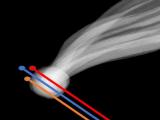
|
02/12/2019 - 03/12/2019
Comet Interceptor Full Team Meeting Granada |
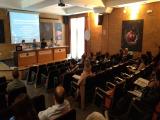
|
04/11/2019 - 08/11/2019
1st IAA-CSIC Severo Ochoa School on Statistics, Data Mining and Machine Learning Granada |

|
23/04/2019 - 23/04/2019
Seminar on Preparation of Proposals to the European Research Council (ERC) Granada |

|
13/06/2019 - 13/06/2019
Key Aspects in the Preparation of a Competitive Proposal MSCA-IF Granada |
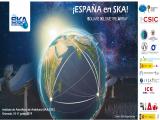
|
10/06/2019 - 11/06/2019
¡España en SKA! Granada |

|
05/11/2020 - 12:30
SO Web-Coloquia: The Arecibo Observatory Roadmap for the Future: science enhancement plans under UCF management The Arecibo Observatory (AO) has supported cutting-edge research in the fields of Astronomy, Planetary Science, and Space Atmospheric Science for decades. The unprecedented sensitivity of the Arecibo antenna has led to fundamental contributions in a wide variety of research programs, including the first detection of an exoplanet around pulsar (Wolszczan... Dr. Noemi Pinilla-Alonso |
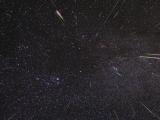
|
11/08/2020
Hoy comienza el máximo de las perseidas, o lágrimas de San Lorenzo A partir de hoy, 11 de agosto, podrán observarse hasta cincuenta perseidas por hora en lugares alejados de la contaminación lumínica. Se producen por el impacto en nuestra atmósfera de fragmentos de la nube de meteoroides del cometa 109P/Swift-Tuttle, y también se registran sobre la superficie de la Luna |
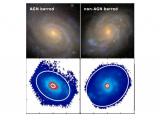
|
31/07/2020
Detectan por primera vez diferencias entre los discos galácticos de galaxias activas y no activas Primera evidencia de diferencias dinámicas a gran escala entre galaxias activas y no activas en el Universo cercano, |

|
29/07/2020
La embajadora de Israel en España visita el IAA-CSIC La embajadora de Israel en España visita el IAA-CSIC |
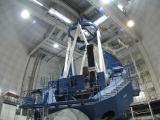
|
20/07/2020
Un prometedor futuro científico y tecnológico para Calar Alto Un prometedor futuro científico y tecnológico para Calar Alto |

|
16/07/2020
Investigadores del IAA participan en GRANDMA, una red internacional para estudiar fuentes de ondas gravitatorias Investigadores del IAA participan en GRANDMA, una red internacional para estudiar fuentes de ondas gravitatorias |
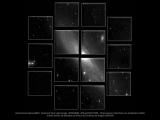
|
15/07/2020
Primera luz técnica de la cámara panorámica JPCam del Observatorio Astrofísico de Javalambre Primera luz técnica de la cámara panorámica JPCam del Observatorio Astrofísico de Javalambre |

|
13/07/2020
El instrumento SO/PHI, a bordo de la misión Solar Orbiter, obtiene el primer mapa magnético autónomo del Sol El instrumento SO/PHI, a bordo de la misión Solar Orbiter, obtiene el primer mapa magnético autónomo del Sol |

|
04/05/2021 - 12:30
SO Web-Colloquia: Thematic area 9 of the CSIC’s new White Book: Understanding the basic components of the Universe, its structure and evolution CSIC is about to publish a White Book to define its scientific strategy for the coming decades. The White Book contains chapters on 14 different thematic areas. One of the main goals of this exercise is to increase collaboration between research groups and institutes of the CSIC. Particular value is set on inter- and cross-disciplinary work. Each thematic area defines a set of “challenges”, key scientific questions for the coming decade(s) in... Dr. María José Costa and Dr. Rainer Schödel |

|
17/09/2020 - 12:30
SO Web-Colloquia: J-PAS: First light results of the JPCam The Javalambre-Physics of the Acclerating Universe Asptrohysical Survey (J-PAS) have just started to scan thousands of square degrees of the northern sky with 56 narrow band filters and the JPCam instrument with the telescope 2.5m of the Javalambre Observatory. Before the JPCam started its operation, we have observed with the pathfinder camera one sq. deg on the AEGIS field (along the extended Groth Strip). This colloquium will present the... Dr. Silvia Bonoli |
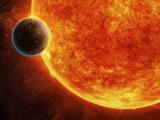
|
25/06/2020
Se hallan dos supertierras alrededor de la estrella enana roja más brillante de nuestro vecindario solar El Instituto de Astrofísica de Andalucía (IAA-CSIC) participa en el descubrimiento de un sistema planetario múltiple en torno a GJ887, una estrella situada a 10.7 años luz de distancia |
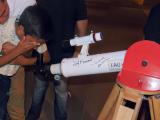
|
23/06/2020
Telescopios para todos Telescopios para inmigrantes y refugiados en Granada |

|
15/06/2020
Detectan la línea verde del oxígeno en la atmósfera de Marte El Instrumento NOMAD, a bordo de la misión ExoMars (ESA) en órbita alrededor de Marte, ha detectado esta emisión diurna del oxígeno atmosférico por primera vez fuera de la Tierra. La línea verde ofrece información sobre la composición y dinámica de la atmósfera, y esta detección ha permitido además resolver una controversia entre medidas atmosféricas en tierra y cálculos atómicos |
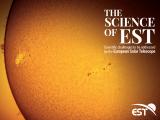
|
15/06/2020
The Science Of EST ya está disponible como libro El volumen incluye 77 artículos breves sobre temas de investigación actuales sobre el Sol, escritos en un lenguaje sencillo por científicos de 30 instituciones europeas de investigación y universidades. |
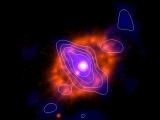
|
10/06/2020
Descubren que las novas, un tipo de explosiones en sistemas dobles de estrellas, se expanden sin freno El Instituto de Astrofísica de Andalucía (IAA-CSIC) participa en el estudio de la expansión del cascarón de material expulsado por varias explosiones de nova. Hallan que, al contrario de lo que se asumía, las novas se expanden sin freno hasta su final, cuando acaban disipándose en el medio interestelar |

|
04/06/2020
Primera detección en otoño de una estratopausa elevada, un fenómeno atmosférico invernal Investigadores del Instituto de Astrofísica de Andalucía detectan, en archivos de datos de 2009, una estratopausa elevada en noviembre, un fenómeno nunca visto fuera del periodo invernal |
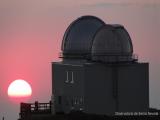
|
28/05/2020
Canceladas las visitas de verano al Observatorio de Sierra Nevada 2020 Desgraciadamente, por motivos de la crisis sanitaria provocada por la Covid-19, nos hemos vistos obligado a suspender las visitas a público general al OSN durante la temporada 2020. Lo sentimos muchísimo. |
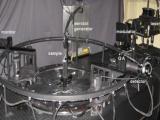
|
22/05/2020
El laboratorio de polvo cósmico del IAA se reinventa para estudiar la detección de coronavirus en superficies El Instituto de Astrofísica de Andalucía (IAA-CSIC) se implica en un proyecto financiado por el Instituto de Salud Carlos III para el desarrollo de un prototipo que permita el análisis de superficies contaminadas por el SARS-CoV-2. El IAA aportará estudios de polarimetría al proyecto, que ya combina la adquisición de imágenes en todo el rango óptico y submilimétrico y su análisis con inteligencia artificial |
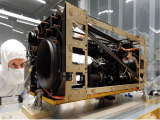
|
18/05/2020
Solar Orbiter: completada con éxito la puesta a punto del hardware de SO/PHI Las pruebas para verificar el correcto funcionamiento del hardware de SO/PHI (Solar Orbiter's Polarimeter and Helioseismic Imager), cuyo desarrollo ha sido coliderado por el Instituto de Astrofísica de Andalucía, han sido completadas con éxito |

|
28/05/2020 - 12:30
Galaxy clusters and their environment Clusters of galaxies are located at the intersection of cosmic filaments. I will first describe how we have found large extensions around clusters, at optical and/or X-ray wavelengths, suggesting that we are indeed detecting the cosmic web around clusters, and I will discuss some galaxy properties in one of these extended filaments. At the cluster scale, I will then describe our searches for substructures in X-rays and show how X-ray... Dr. Florence Durret |

|
31/03/2020 - 12:30
HI mapping of nearby dwarf galaxies with SKA pathfinders: unique capabilities of KAT-7 and MeerKAT Dwarf galaxies are by far the most numerous galaxies in the Local Universe. Their simple structure and proximity provides a unique window to the detailed investigation of various processes necessary for galaxy formation and evolution. One of the most reliable approach for studying the evolution of galaxies is to look at their physical properties using the neutral hydrogen gas (HI). In this talk I will present ongoing work on the HI properties... Dr. Brenda Namumba |

|
05/05/2020
El IAA estudia la influencia del estado de alarma en los niveles de contaminación lumínica El proyecto, desarrollado por la Oficina de calidad del cielo del IAA-CSIC y que cuenta con el apoyo del Ayuntamiento de Granada, analizará cómo las condiciones ambientales actuales han repercutido en los niveles de contaminación lumínica |

|
05/05/2020 - 05/05/2020
Workshop MAAT@GTC Granada -- Virtual Format |
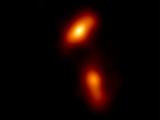
|
07/04/2020
El Telescopio del Horizonte de Sucesos revela estructuras inesperadas en el cuásar 3C279 Hace aproximadamente un año, la colaboración Telescopio Horizonte de Sucesos (EHT) publicó la primera imagen de un agujero negro. Ahora han observado al detalle el chorro de material a alta velocidad que emerge de un agujero negro supermasivo |
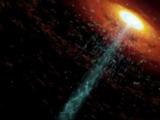
|
07/04/2020
La fusión de dos galaxias genera la versión juvenil de un blázar, uno de los objetos más energéticos conocidos Se ha obtenido la primera detección inequívoca de un chorro de material a altísima velocidad que emerge de una galaxia en proceso de colisión con otra. El chorro emerge del agujero negro supermasivo central de la galaxia y se observa de frente, una estructura precursora a la formación de un blázar |
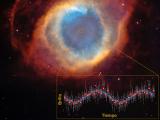
|
27/03/2020
Una estrella compañera: posible origen de las complejas formas de las nebulosas planetarias Datos del telescopio espacial TESS muestran variabilidad en una muestra de nebulosas planetarias, compatible con la presencia de una estrella compañera. Esta binariedad podría explicar las complejas morfologías que presentan estos objetos, producto de la muerte de las estrellas de masa baja e intermedia |

|
17/03/2020 - 12:30
Magnetic fields, rotation, and activity in M dwarf stars M dwarfs are known to generate the strongest magnetic fields among main-sequence stars with convective envelopes, but we are still lacking a consistent picture of the link between the magnetic fields and underlying dynamo mechanisms, rotation, and activity. For instance, models predict that the maximum magnetic flux a star can generate scales with convective energy stored in its envelope, but no accurate measurements existed until recently.... Dr. Denis Shulyak |
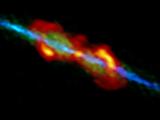
|
10/03/2020
Se observa la metamorfosis de una estrella en las fases finales de su vida El radiotelescopio ALMA ha fotografiado una estrella en su evolución hacia nebulosa planetaria |
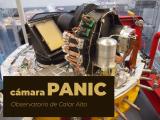
|
09/03/2020
Una tesis desarrollada en el IAA obtiene el premio MERAC 2020 en nuevas tecnologías La ingeniera óptica Concepción Cárdenas Vázquez ha sido galardonada con el Premio MERAC a la Mejor Tesis Doctoral en Nuevas Tecnologías (Instrumental), otorgado por la Sociedad Astronómica Europea (EAS) |
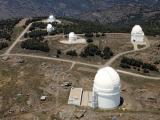
|
06/03/2020
Un observatorio más sostenible: Calar Alto se convertirá en una “isla energética” El Observatorio de Calar Alto, cogestionado científicamente por el IAA-CSIC, comienza su transición energética gracias a un proyecto financiado con fondos FEDER (Fondo Europeo de Desarrollo Regional). El empleo de biomasa y energía solar permitirá reducir considerablemente la huella ecológica del observatorio, así como los gastos asociados a su demanda energética |
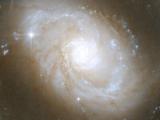
|
04/03/2020
El instrumento MEGARA se adentra en el corazón de la galaxia activa NGC 7469 Un trabajo encabezado por el IAA-CSIC ha revelado la existencia de dos discos de gas en rotación en las proximidades del agujero negro supermasivo de la galaxia, así como de una tercera componente que apunta a movimientos turbulentos |
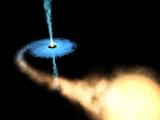
|
02/03/2020
Se obtiene la película completa de cómo un agujero negro expulsa materia e interactúa con el medio El agujero negro, que forma un sistema binario con una estrella de tipo solar, experimentó una eyección de materia que transportó gas a enormes distancias |
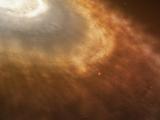
|
25/02/2020
Un estudio revela cómo eran las semillas de los cuerpos sólidos del Sistema Solar: motas de polvo porosas y de pocos milímetros El IAA encabeza una investigación que muestra, por primera vez de forma experimental, los rasgos de las partículas del núcleo de un cometa |
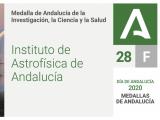
|
24/02/2020
El Instituto de Astrofísica de Andalucía, Medalla de Andalucía 2020 En el cuadragésimo aniversario de la Comunidad Autónoma andaluza, el IAA-CSIC obtiene la Medalla de la Investigación, la Ciencia y la Salud otorgada por la Junta de Andalucía |
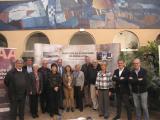
|
24/02/2020
El Instituto de Astrofísica de Andalucía recibe la visita de su Comité científico asesor externo Nombrado por la presidencia del Consejo Superior de Investigaciones Científicas (CSIC), el Comité está formado por diez expertos internacionales de reconocido prestigio |
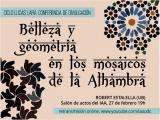
|
27/02/2020 - 19:00
Belleza y geometría en los mosaicos de la Alhambra Conferencia de divulgación, ciclo Lucas Lara. Robert Estalella |
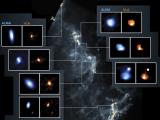
|
18/02/2020
Se hallan más de trescientos discos de formación de planetas en estrellas jóvenes en las nubes de Orión Los radiotelescopios ALMA y VLA se adentran en las nubes de Orión, un vivero estelar que revela cómo las estrellas recién nacidas evolucionan y desarrollan discos protoplanetarios. Investigadores del Instituto de Astrofísica de Andalucía (IAA-CSIC) participan en el trabajo, que constituye el mayor muestreo de este tipo realizado hasta la fecha |
